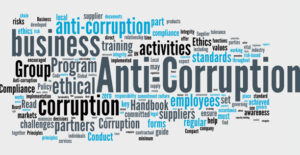An Overview of the Main Sections of ISO 13485:2016

What is the reason ISO 13485 is revised and accepted in 2016?
Numerous Global Regulatory bodies are including ISO 13485 into their requirements making it a good product for international companies. The revision to ISO 13485:2003 aids in ensuring compliance with regulations in relation to document management, complaints Management, and Reporting to regulators.
A greater importance on risk-based strategies to safety and quality
ISO 13485 is an exception. ISO 13485 standard does not contain any high-level Annex SL structure that’s found in various ISO 9001:2015 standards. However, it does require the use of risk-based methods for security and quality, as does the one that’s found over 12 occasions in the standards ISO 9001:2016. The emphasis is more on risk-based strategies to safety and quality as in comparison to the ISO 13485 standard of 2003.
Conformity to ISO 9001:2016 will require companies to prove that the risk factor is taken into consideration for all of the company’s Quality Management System (QMS) processes , which includes the aspects illustrated in the figure below.
The ISO 9001:2016 standard will require companies to prove that risk is considered throughout the company’s Quality Management System (QMS) procedures
The next section will guide you through the most important sections of ISO 13485:2016, and will provide guidelines and action items to assist you in implementing these standards in your medical device business.
Quality Management System
The definition is: “A formal system that documents the structure, roles, processes, and the procedures needed to ensure an effective Quality Management.” (ASQ, quality Management System).
What is QMS? The QMS comprises the most fundamental set of guidelines such as procedures, forms and work guidelines. It also includes instructions, sequences, and tools needed to do work with the medical device manufacturer. Documentation of quality records is done to verify it is the QMS is implemented and adhered to.
The regulations differ across markets. While addressing the particular regulations of the market in which the medical device will be made and sold in, the QMS content must also be addressing the ISO 13485:2016.
QMS Hierarchy example
Controlling and monitoring processes that are in conflict with those requirements in the risk-based method: If you manage the processes internally or outsource a portion of them, the processes that affect the requirements of the ISO 13485:2016 risk-based method should be controlled and monitored. There must be clear the roles and responsibilities of each in written quality agreements for any outsourcing of resources. In the ongoing monitoring of the QMS to ensure its effectiveness modifications must be made as needed and documented. One of the most effective methods to achieve this is to establish key performance indicators for the various processes in the QMS.
PDSA model
The companies can prove that they’re committed to protecting quality and safety by validating computers they have installed. Specific requirements for the validation of software like Enterprise Resource Planning (ERP), QMS and Laboratory Information Management Systems (LIMS), along with any other applications utilized in the creation and maintenance of medical equipment are covered in ISO 13485. Because software validation requires much energy and time, lots of life science companies opt for automated validation.
Even before you begin using the software, it’s ideal to tweak and configure the program to be in line with the requirements of ISO 13485. Through the establishment of an automated validation system firms can be ahead of the curve for CFR section 11 compliance.
Documentation needs
The documentation of QMS is vital. Be sure to document it correctly. Otherwise, it could cause issues. It is essential to document QMS processes Quality events, QMS processes, and workflows need to be designed with diligence. It is all about delineating the process and proving that the procedures are being implemented. Documentation provides proof of the essential. Documentation aids your staff in the creation, development, manufacturing and support for medical devices. It should prove that your company is dedicated to achieving the goals for the QMS.
Establishing a complete and functional document management system for your business is one of the essential elements of the QMS.
High-quality manual
A Quality Manual is a critical element of your Quality management system. Make sure you have a Quality Manual covers the following:
It is the Scope of QMS:
It’s an outline of the activities your business performs and the limitations that you have set for your Quality Management program.
Procedures that are documented
The procedures documented as mandatory by ISO 13485 include:
- Control of documents
- Control of records
- Internal audit
- Control of products that are not conforming to the requirements
- Corrective and preventive measures
- Verification of software programs on computers
- Specifications of the customer (for manufacturing and inspection, packaging and delivery)
- Monitoring and measuring
- Installation and maintenance (if necessary)
- Review of the management
- Environment for work and control of contamination
- Design and development
- Testing of sterilization methods and the use of sterile barrier systems (if appropriate)
- Traceability and identification
- Preservation of the product
- Verification or calibration of measuring equipment
- Feedback and handling of complaints
- Reporting to regulators
- Reworks, advisory notices and data analysis
Procedures can be illustrated in a visual manner and could be included in the Quality Manual. If you have more extensive procedures needing more information written down be sure to include the documents’ references inside the Quality Manual.
Descriptions of the processes and their interrelations:
The most effective way to convey this is with an overview flowchart that outlines the basic elements of the business’s procedures, using arrows that point at the way they work.
Medical Device File
The specifications for the different components of a medical device’s medical device document are laid out in Sub-clause 4.2of ISO 1385:2016.
- Keep reference documents demonstrating conformity
- Provide a description for every medical device family
- Create and maintain processes for every medical device family
- Maintain guidelines and procedures for the measurement of the products
- Procedures to be followed for maintenance and installation
Document Control
In accordance with Section 4.2.4 (Control of documents) from ISO 13485, 2016, the documents needed for the Quality Management System (QMS) must be kept and monitored to ensure their useability efficiency, effectiveness, and sufficiency to function. When you are implementing the document control process, determine your organization’s guidelines for document control, and make sure that documents are examined and approved prior to use. Establish controls to avoid the use of old documents and monitor the revision status as well as changes of documents.
Control of records
Records must be managed similar to how documents are. Records are evidence that the processes required were followed.
It is essential to have that you are aware of the definition of records. A lot of people are confused about the distinction between records and documentation.
Management Responsibilities
The best control over records can be ineffective if there isn’t total support from the executive management in ensuring product safety and encouraging the constant improvements in processes. Executive management must not just give lip support towards the QMS. By accepting, embracing and upholding it, they can create the culture of true high-quality throughout the entire organization. A slight slip in their commitment to quality could make it very difficult to bring it back.
The ISO 13485:2016 outlines the requirements for the management of accountability. It is stated in the FDA CFR 820.12 CFR 820.12 declares, “Management with executive responsibility must establish its policies and goals for, and dedication to quality. Executive management must assure that the Quality Policy is clearly understood and is implemented across all levels of the company.”
Section 5.6 section of ISO 13485:2016’s Management overview.
Documented procedures are mandatory.
The inputs are increased
- Complaint handling
- Reporting to regulators
- Monitoring and evaluating the effectiveness of processes
- Monitoring and measuring of products
- Corrective action
- Prevention-based action
- Revisions to the regulatory requirements that are applicable
The result should be recorded and include the inputs reviewed as well as the actions taken to:
- Improvement is required in QMS
- Product improvement based on customer demands
- Modifications are required to meet regulations
- Resources requirements
Resource Management
Section 6 of ISO 13485:2016 addresses this subject. The company is required to recognize the need and allocate qualified personnel as well as infrastructure, processes and working environment to ensure the safety of its products. It is essential to ensure that staff are competent through formal training, ensuring the level of competency of employees and providing ongoing training when required. Another important aspect of resource management is workplaces, buildings, processes, equipment and software that help with business operations, as well as support services.
- It is essential to document processes for establishing competence, providing education, and ensuring that employees are aware
- It requires the use of the risk-based method to establish the process used to evaluate the effectiveness of training.
Product Realization
A top-of-the-line view of what the realization of the product entails
Product realization is the description of the way your company creates, designs, develops and distributes medical equipment.
Product realization encompasses the processes and resources required to determine the needs of customers Design and development, purchasing production, and field assistance.
A variety of elements of the QMS and a wide range of staff and resources assist in the execution of the product realization. In planning and extending your efforts in implementing your product it is essential to have these elements in the first place:
- Set quality standards for the product
- Documentation and processes that are defined
- Affordable infrastructure and workplace environment
- Staff properly trained and qualified
- Establish monitoring, verification, and validation and measurement handling, storage tracking and distribution activities to ensure that the processes and products
- Documented documents that demonstrate that the processes used to create the product and the final product meets the specifications
Measurement, Analysis and Improving
- Feedback isn’t only about complaints from customers. To ensure the safety of products and assess its performance, the process of feedback should be clearly defined in order to collect information from post-production and production actions.
- To ensure that the product monitoring is carried out and the feedback provided can be used to inform your risk-management process as well as product realization.
- A new section on the handling of complaints and reports to regulators is also included.
- If a complaint isn’t addressed, the reason for the complaint must be recorded. Additionally, any corrections or corrective actions in response to the investigation of the complaint must be recorded in detail.
- There is greater clarity in relation regarding the supervision and measuring of the processes that companies must follow during the development of a quality program. These actions are performed during the relevant phases of product development.
- There is greater clarity regarding the nonconforming item. Additionally, there is more information concerning how to handle the nonconforming item prior to and following delivery in order so that situations are dealt with appropriately.
- A new section titled Rework is added. Rework is necessary to be done according to the procedure or guidelines. Testing must be done identical to that of the initial product.










